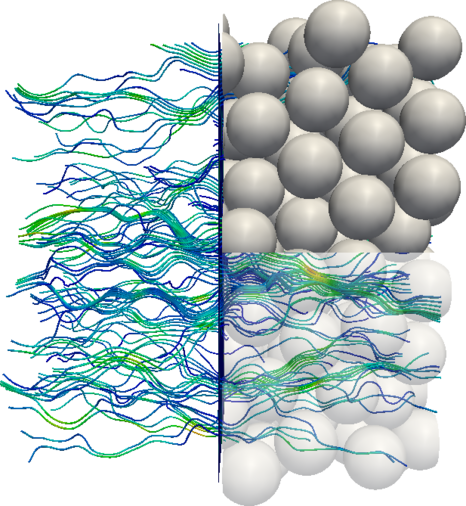
| Title | Improvement of diffusive mass transfer in hierarchically structured Fischer-Tropsch catalysts |
| Funding | DFG Priority Program 1570, 2011 - 2017 |
| Researcher | Dipl.-Ing. Eugenia Barthelmie |
The pore system of a cobalt-based catalyst for Fischer-Tropsch synthesis is completely filled with liquid hydrocarbons under typical reaction conditions. This leads to lower catalyst utilization and in particular to reduced selectivity and reduced conversion with respect to long-chain hydrocarbons due to the formation of unwanted methane. The relationship between pore morphology and catalyst activity and product selectivity is being investigated in this project in cooperation with the Institute of Chemical and Electrochemical Process Engineering (ICVT) and the Institute of Mechanical Process Engineering (MVT) at Clausthal University of Technology. For this purpose, transport processes and chemical reactions in the liquid phase within multimodal synthetically generated pore systems and real pore systems imaged by computer tomography are numerically quantified at the ITM. Lattice-Boltzmann and random-walk particle tracking methods are used as numerical methods to determine the transport and reaction coefficients due to their high spatial resolution. The determined parameters are transferred to the Turek working group of the ICVT for process simulation and catalyst characterization in a Fischer-Tropsch reactor model; together with the Weber working group of the MVT, optimization strategies for layer structures from so-called building blocks are tested. Theoretical and experimental work from previous project phases has shown that larger, in particular parallel, cylindrical transport pores in the catalyst structure significantly improve the accessibility of the pore system. A further increase in catalyst utilization is to be achieved by coating the pore surfaces as omniphobically as possible so that they remain largely free of liquid products. Such pores are produced in the project using various methods, modeled theoretically and tested experimentally.
